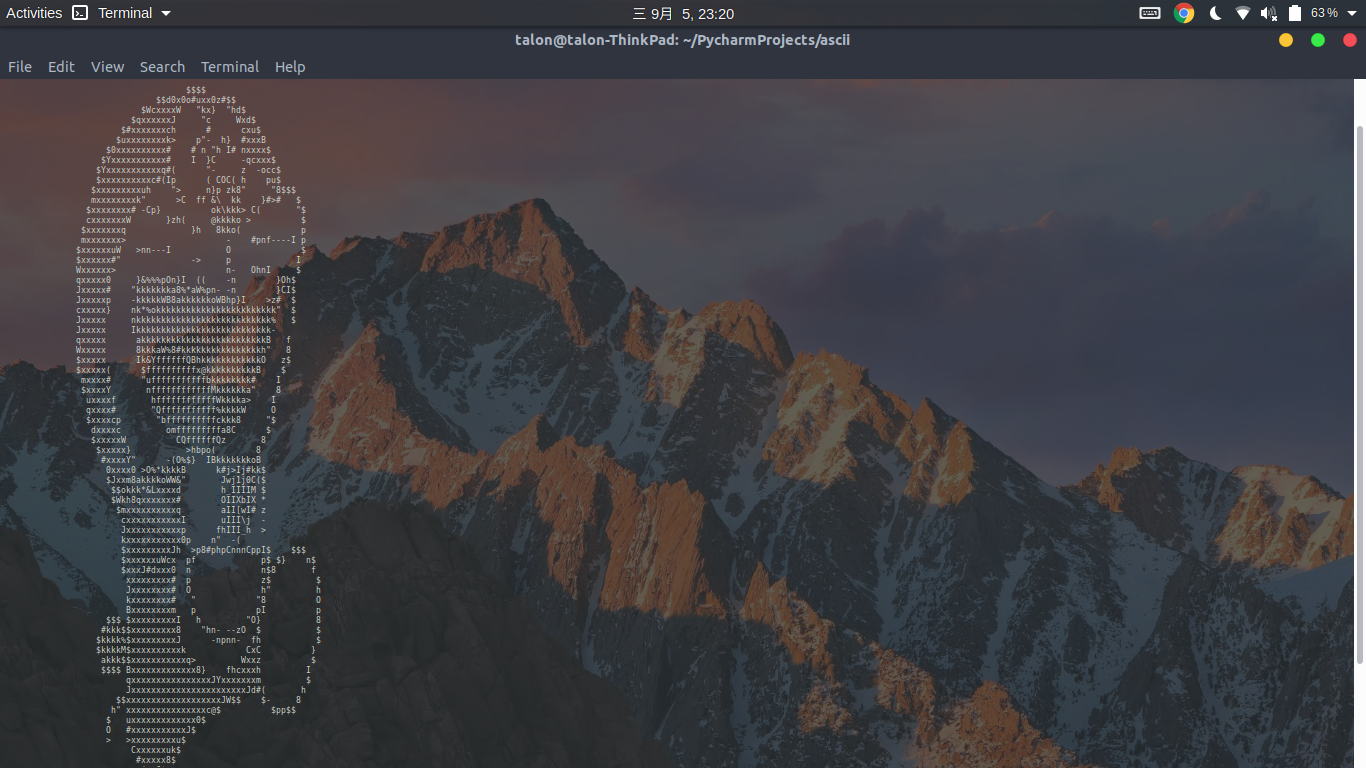通过Python3编写一个将图片转为字符画的程序。
一 环境
Python3 pillow-5.1
sudo pip3 install pillow二 原理
字符画:
字符画是一系列字符的组合,我们可以把字符看作是比较大块的像素,一个字符能表现一种颜色(暂且这么理解吧),字符的种类越多,可以表现的颜色也越多,图片也会更有层次感。
灰度值:
指黑白图像中点的颜色深度,范围一般从0到255,白色为255,黑色为0,故黑白图片也称灰度图像。
可以使用以下灰度值公式:
gray = 0.2126 * r + 0.7152 * g + 0.0722 * b字符列表:
我们可以创建一个不重复的字符列表,灰度值小(暗)的用列表开头的符号,灰度值大(亮)的用列表末尾的符号。
三 实现
在命令行中输入
vim ascii.py或者在Pycharm中新建项目。
导入必要的库,argparse库用来管理命令行参数输入
from PIL import Image import argparse可以使用以下字符集,共70个字符,字符的种类与数量可以根据字符画效果更改。
ascii_char = list("$@B%8&WM#*oahkbdpqwmZO0QLCJUYXzcvunxrjft/|()1{}[]?-_+~<>i!lI;:,\"^`'. ")RGB值转字符的函数:
def get_char(r,g,b,alpha = 256): if alpha == 0: return ' ' length = len(ascii_char) gray = int(0.2126 * r + 0.7152 * g + 0.0722 * b) unit = (256.0 + 1)/length return ascii_char[int(gray/unit)]ascii.py 完整代码:
from PIL import Image import argparse #命令行输入参数处理 parser = argparse.ArgumentParser() parser.add_argument('file') #输入文件 parser.add_argument('-o', '--output') #输出文件 parser.add_argument('--width', type = int, default = 80) #输出字符画宽 parser.add_argument('--height', type = int, default = 80) #输出字符画高 #获取参数 args = parser.parse_args() IMG = args.file WIDTH = args.width HEIGHT = args.height OUTPUT = args.output ascii_char = list("$@B%8&WM#*oahkbdpqwmZO0QLCJUYXzcvunxrjft/|()1{}[]?-_+~<>i!lI;:,\"^`'. ") # 将256灰度映射到70个字符上 def get_char(r,g,b,alpha = 256): if alpha == 0: return ' ' length = len(ascii_char) gray = int(0.2126 * r + 0.7152 * g + 0.0722 * b) unit = (256.0 + 1)/length return ascii_char[int(gray/unit)] if __name__ == '__main__': im = Image.open(IMG) im = im.resize((WIDTH,HEIGHT), Image.NEAREST) txt = "" for i in range(HEIGHT): for j in range(WIDTH): txt += get_char(*im.getpixel((j,i))) txt += '\n' print(txt) #字符画输出到文件 if OUTPUT: with open(OUTPUT,'w') as f: f.write(txt) else: with open("output.txt",'w') as f: f.write(txt)
四 测试
下载测试用图片:
wget http://labfile.oss.aliyuncs.com/courses/370/ascii_dora.png图片:

运行程序:
python3 ascii.py ascii_dora.png查看结果:
使用vim打开output.txt文件查看效果
vim output.txt效果如图:
